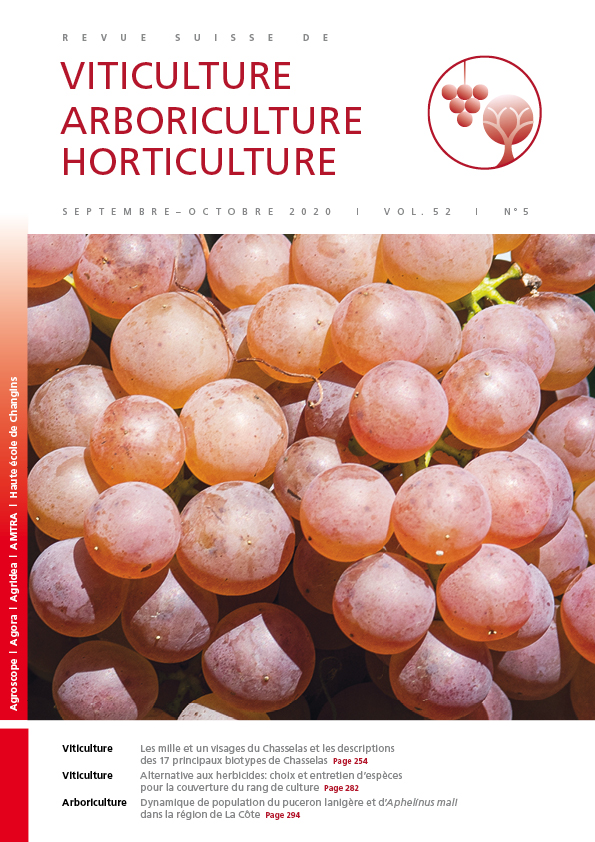
Issue 5 - September - October 2020

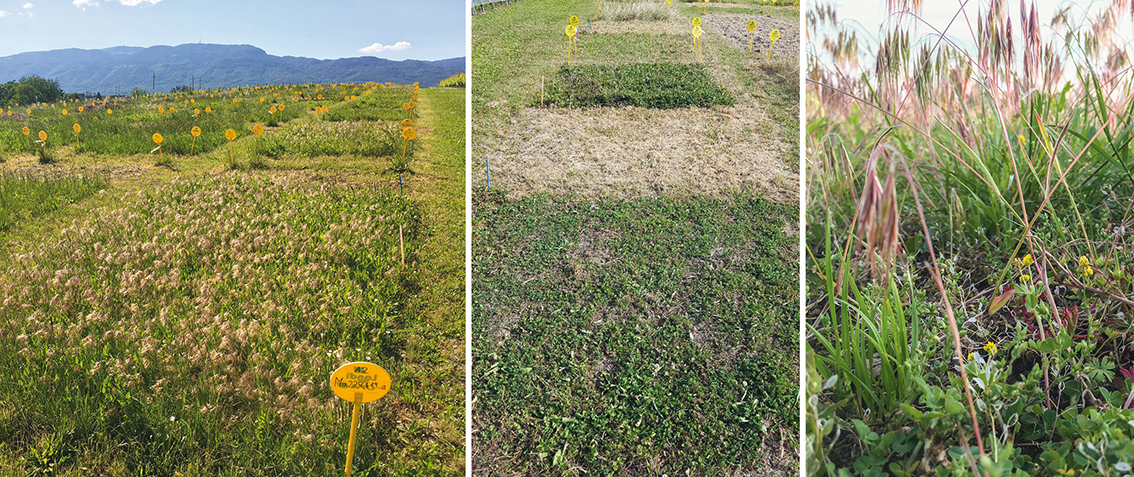
Abstract in open access
Areas where mechanization is difficult (under the row, on steep slopes and in inaccessible plots) represent a technical challenge for alternatives to herbicide use. To circumvent these difficulties, cover crops might represent a good option if the plants do not compete with vines and trees, stay short, and inhibit the development of unwanted weeds through allelopathy (the ability of plants to interfere with each other through chemical mediators). With the aim of developing such a cover, different plant species sown in spring and autumn were tested under different mowing intensities, and compared with spontaneous flora and mechanical and chemical weeding. Our results showed that after one year, the autumn-sown cover crops offered a greater number of ecosystem services than the spring-sown cover crops (better seedling development, soil protection and control of unwanted weeds). Moreover, this work revealed that the management strategy of the mowing is crucial for the development of the cover crops. For instance, the downy brome (Bromus tectorum) as well as the black medick (Medicago lupulina) required a specific mowing frequency for an appropriate establishment in the plots. Overall, the absence of mowing did not promote a suitable development of the cover crops.
.
Keywords: cover crop management, mowing intensity, ecosystem services, perennial culture row, viticulture, weed management
E-Mail: matteo.mota@changins.ch
Adress: School of Engineering at Changins
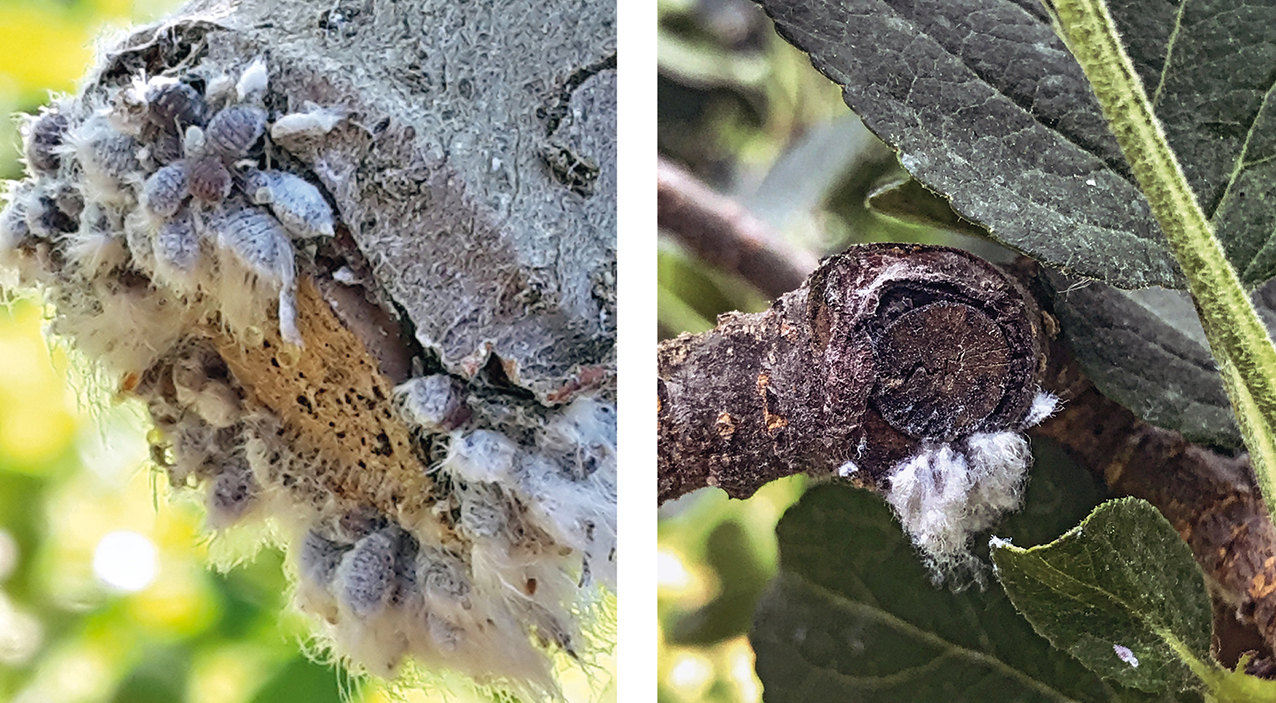
Abstract in open access
An important pest in fruit growing is the woolly aphid (lat. Eriosoma lanigerum), which forms white, woolly colonies in the root area and on the stem. In spring and late autumn, when the infestation is high, the woolly aphids can migrate to the young shoots and cause cancerous growths due to their sucking activity. An important antagonist of this fruit tree pest is the parasitoid wasp Aphelinus mali. Its occurrence and population dynamics are very closely related to the woolly aphid. During a 3-year project by Agroscope Wädenswil in cooperation with fenaco, we gained deeper insights into the life cycles of these organisms. The knowledge generated helps to better understand the complicated ecological relationships in the fruit growing system and to refine the control strategy.
Keywords: Eriosoma lanigerum, Aphelinus mali, populationsdynamics, parasitisme, Spirotetramat
E-Mail: andreas.naef@agroscope.admin.ch
Adress: Agroscope, 8820 Wädenswil
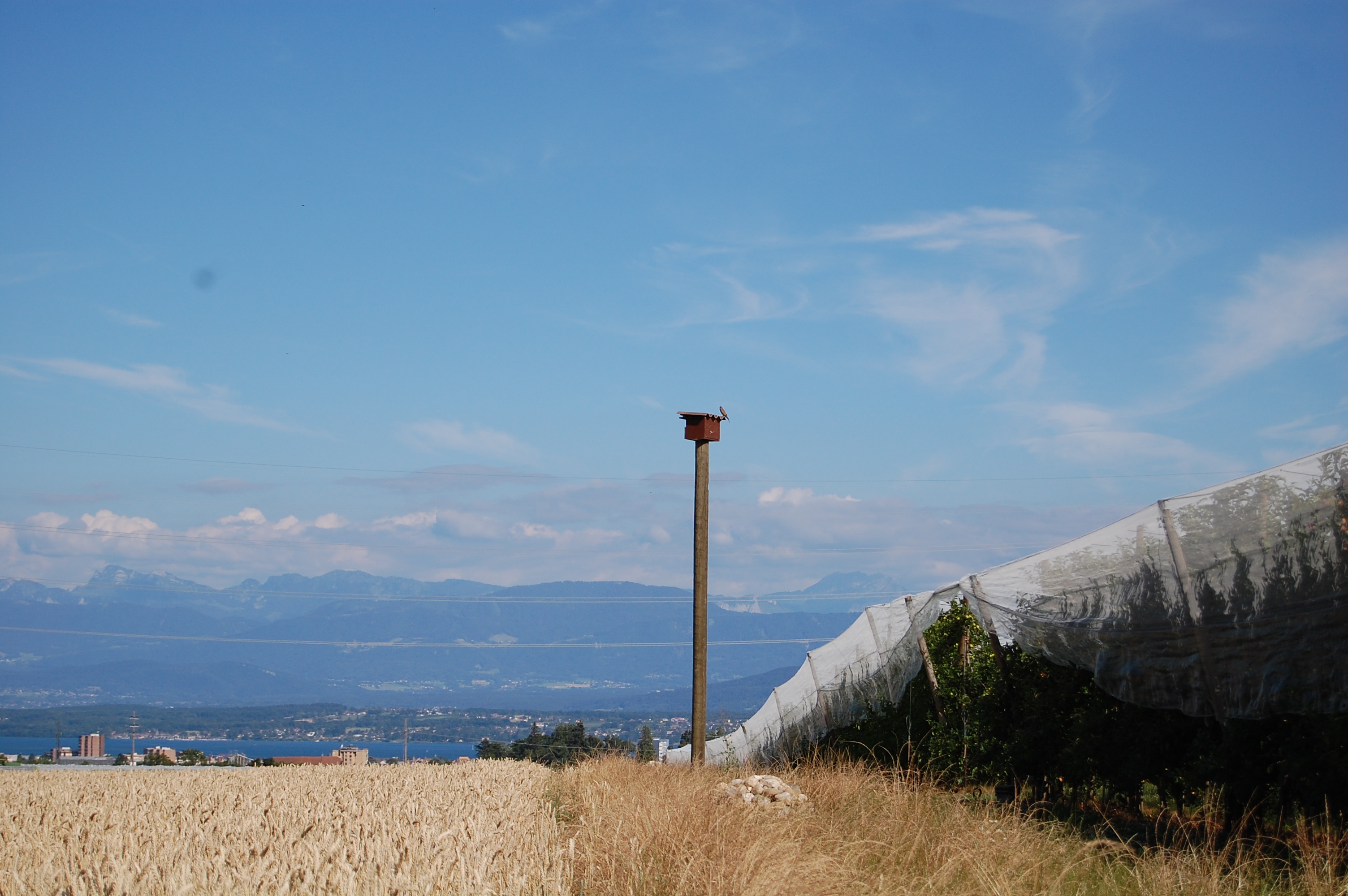
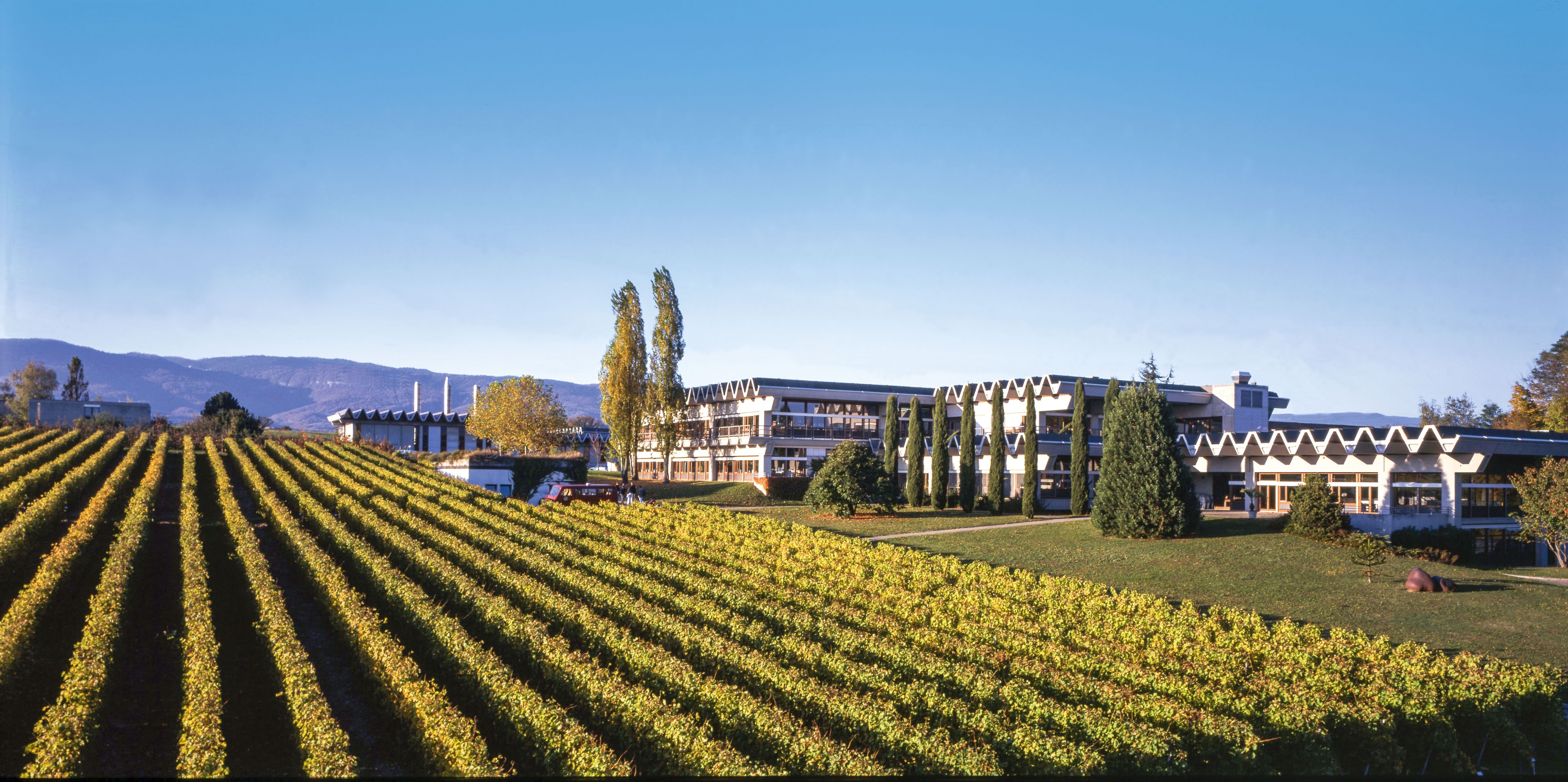

 Download of full issue
Download of full issue
 Download article
Download article Download article
Download article